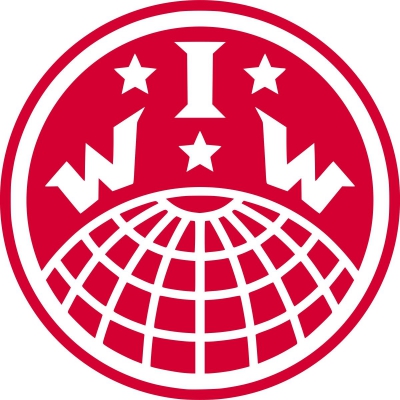The Centralia Tragedy, also known as the Centralia Conspiracy and the Armistice Day Riot, was a violent and bloody incident that occurred in Centralia, Washington, on November 11, 1919, during a parade celebrating the first anniversary of Armistice Day. The conflict between the American Legion and Industrial Workers of the World (IWW or "Wobblies") members resulted in six deaths, others being wounded, multiple prison terms, and an ongoing and especially bitter dispute over the motivations and events that precipitated the event. Both Centralia and the neighboring town of Chehalis had a large number of World War I veterans, with robust chapters of the Legion and many IWW members, some of whom were also war veterans.
The ramifications of the event included a trial that attracted national media attention, notoriety that contributed to the First Red Scare in 1919 to 1920, the creation of a powerful martyr for the IWW, a monument to one side of the battle, a mural for the other side, and a formal tribute to the fallen Legionnaires by US President Warren G. Harding.
The Industrial Workers of the World (IWW), members of which are commonly termed "Wobblies", is an international labor union that was founded in Chicago in 1905. The origin of the nickname "Wobblies" is uncertain. IWW ideology combines general unionism with industrial unionism, as it is a general union, subdivided between the various industries which employ its members. The philosophy and tactics of the IWW are described as "revolutionary industrial unionism", with ties to socialist, syndicalist, and anarchist labor movements.
In the 1910s and early 1920s, the IWW achieved many of their short-term goals, particularly in the American West, and cut across traditional guild and union lines to organize workers in a variety of trades and industries. At their peak in August 1917, IWW membership was estimated at more than 150,000, with active wings in the United States, Canada, and Australia. The extremely high rate of IWW membership turnover during this era (estimated at 133% per decade) makes it difficult for historians to state membership totals with any certainty, as workers tended to join the IWW in large numbers for relatively short periods (e.g., during labor strikes and periods of generalized economic distress).Membership declined dramatically in the late 1910s and 1920s. There were conflicts with other labor groups, particularly the American Federation of Labor (AFL), which regarded the IWW as too radical, while the IWW regarded the AFL as too conservative and opposed their decision to divide workers on the basis of their crafts. Membership also declined due to government crackdowns on radical, anarchist and socialist groups during the First Red Scare after World War I. In Canada the IWW was outlawed by the federal government by an Order in Council on September 24, 1918.Probably the most decisive factor in the decline in IWW membership and influence was a 1924 schism in the organization, from which the IWW never fully recovered.The IWW promotes the concept of "One Big Union", and contends that all workers should be united as a social class to supplant capitalism and wage labor with industrial democracy. It is known for the Wobbly Shop model of workplace democracy, in which workers elect their own managers and other forms of grassroots democracy (self-management) are implemented. The IWW does not require its members to
work in a represented workplace, neither does it exclude membership in another labor union.

1919Nov, 11
The Industrial Workers of the World attack an Armistice Day parade in Centralia, Washington, ultimately resulting in the deaths of five people.
Choose Another Date
Events on 1919
- 5Jan
Nazi Party
The German Workers' Party, which would become the Nazi Party, is founded. - 23Mar
Italian Fascism
In Milan, Italy, Benito Mussolini founds his Fascist political movement. - 4May
Treaty of Versailles
May Fourth Movement: Student demonstrations take place in Tiananmen Square in Beijing, China, protesting the Treaty of Versailles, which transferred Chinese territory to Japan. - 19May
Turkish War of Independence
Mustafa Kemal Atatürk lands at Samsun on the Anatolian Black Sea coast, initiating what is later termed the Turkish War of Independence. - 29May
General relativity
Albert Einstein's theory of general relativity is tested (later confirmed) by Arthur Eddington and Andrew Claude de la Cherois Crommelin.

 English
English  español
español  français
français  português
português  русский
русский  العربية
العربية  简体中文
简体中文 